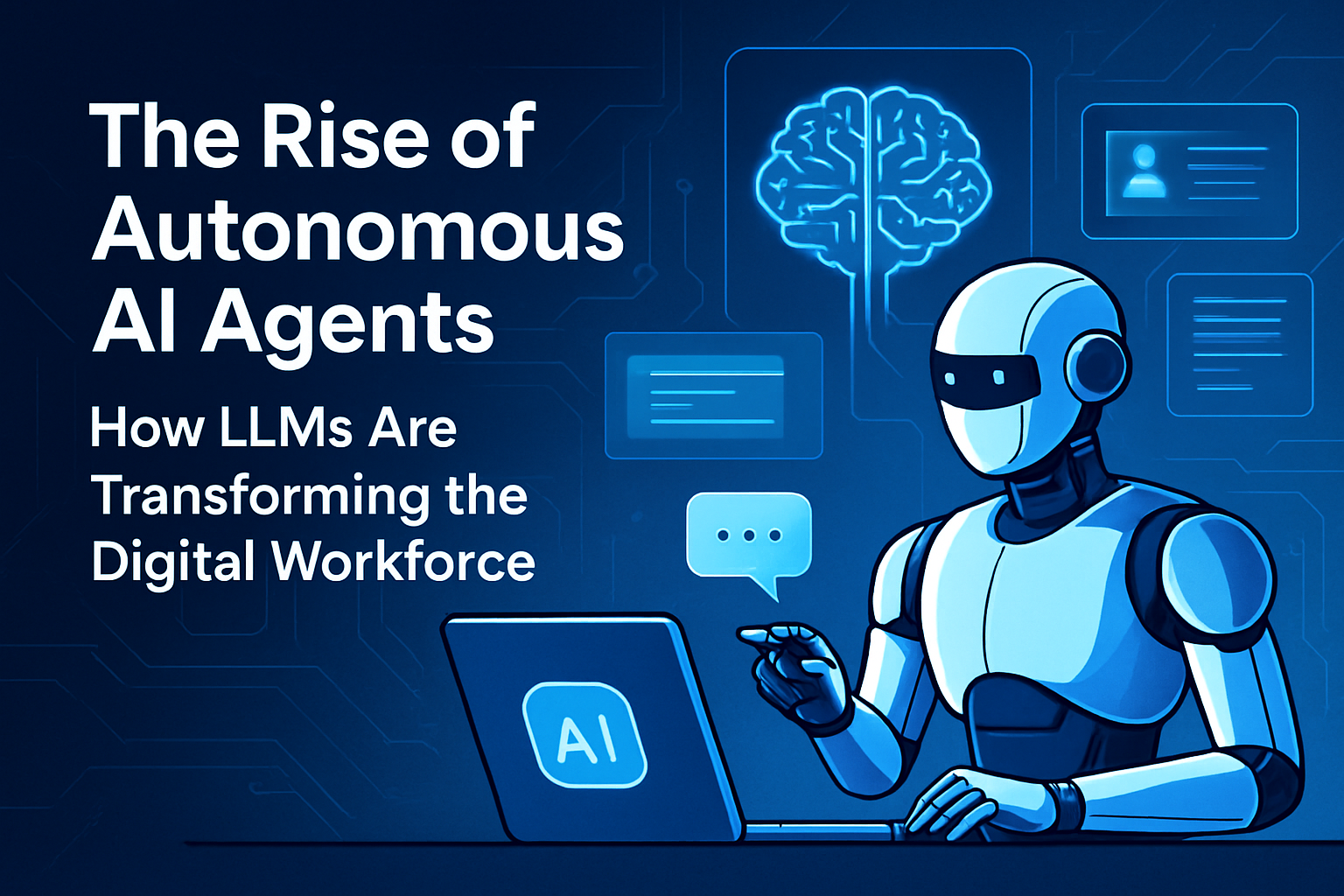
In a world increasingly run by artificial intelligence, autonomous AI agents have emerged as one of the most transformative innovations of 2025. These intelligent digital workers are powered by Large Language Models (LLMs) like GPT-4, Claude, and Gemini, enabling them to think, plan, reason, and act with minimal human intervention. As businesses seek automation beyond repetitive tasks, AI agents are stepping in—not just as tools, but as collaborative, autonomous digital team members.
What Are Autonomous AI Agents?
An autonomous AI agent is an AI system that can operate independently to accomplish tasks. Unlike basic automation tools, these agents possess reasoning capabilities, memory, contextual awareness, and language understanding. They take input from users or environments, plan actions using internal goals, and learn over time. Think of them as “mini-AIs” running errands across digital landscapes—researching data, writing reports, booking meetings, sending emails, and more.
How LLMs Power These Agents
Large Language Models (LLMs) are the brainpower behind autonomous AI agents. LLMs like GPT-4 or Claude provide the linguistic intelligence that allows agents to comprehend instructions, generate responses, and make decisions. By connecting LLMs to tools like APIs, browsers, and memory systems, AI agents gain the ability to reason, remember, and act beyond simple prompt-response dynamics.
Key Features of AI Agents
Some standout features of modern AI agents include:
- Autonomy: Agents perform tasks without ongoing human input.
- Goal Orientation: Users define a goal, and the agent breaks it down into sub-tasks.
- Memory: Advanced agents remember previous interactions and use them for better decision-making.
- Multi-modal Capabilities: Many can now process not only text, but also images, videos, and code.
Popular AI Agent Frameworks in 2025
Several open-source and commercial frameworks are enabling users to build and deploy AI agents:
- AutoGPT: An early pioneer allowing users to create goal-driven agents using GPT-4.
- AgentGPT: A browser-based tool that spawns autonomous agents with minimal setup.
- OpenAgents by OpenAI: A secure and robust platform for enterprise-grade agent deployment.
- Microsoft AutoGen: A multi-agent framework designed for collaborative task automation.
- BabyAGI: A minimalist framework for recursive task planning with memory integration.
Use Cases in the Real World
AI agents are already showing real-world value across industries:
- Customer Service: AI agents handle complex queries, process returns, and schedule appointments.
- Marketing: Automate entire marketing funnels—content generation, A/B testing, and campaign analysis.
- Research and Analysis: Academic institutions and journalists use agents to sift through thousands of documents.
- Finance: Agents handle invoice reconciliation, fraud detection, and even financial modeling.
- Software Development: Autonomous agents write, test, and debug code based on high-level user prompts.
AI Agents vs Traditional Automation
Traditional automation tools rely on fixed rules and scripts. In contrast, AI agents are adaptive, meaning they can handle unstructured tasks and learn from experience. They use reasoning, error correction, and even creativity to solve problems. This leap in capability is reshaping digital workflows and the definition of “automated work.”
Challenges and Risks
Despite their promise, AI agents are not without concerns:
- Hallucinations: LLMs may still generate false or misleading information.
- Security Risks: Autonomous agents could misuse credentials or APIs if not sandboxed correctly.
- Over-reliance: Organizations may become overly dependent on agents, risking breakdowns if they fail.
- Ethical Dilemmas: Agents acting autonomously may execute tasks that require human judgment or sensitivity.
The Role of Memory and Tools
Modern AI agents rely on vector databases (like Pinecone or Chroma) for memory, APIs for actions, and web access for browsing. This ecosystem of tools allows them to function more like human interns or assistants—capable of research, planning, decision-making, and execution.
The Economic Impact of AI Agents
Autonomous AI agents are reducing costs by replacing redundant manual work and speeding up business processes. As organizations restructure around digital workflows, entire departments—especially in operations, customer service, and content—are being augmented or even replaced by agent-based systems.
AI Agents in Collaboration With Humans
The future isn’t about AI replacing humans—it’s about humans collaborating with agents. Designers use agents to generate visual ideas, researchers use them to scan literature, and executives rely on them to analyze market trends. AI agents are co-pilots, not competitors.
Security and Governance
As AI agents gain more control, security protocols and oversight become vital. Techniques like “sandboxing,” human-in-the-loop review, and real-time auditing are being adopted to mitigate misuse. Regulatory bodies are also stepping in to enforce standards in agent alignment and safety.
The Future of Autonomous AI Agents
Looking ahead, AI agents may evolve into semi-sentient collaborators capable of reasoning over weeks or months of data. We might see agent networks managing organizations, designing products, or even negotiating contracts. LLMs will continue evolving toward greater context retention, real-time adaptability, and perhaps even emergent intelligence.
Conclusion
Autonomous AI agents, powered by LLMs, are no longer a futuristic dream—they’re here and changing the face of digital work. As these agents become smarter, safer, and more capable, businesses and individuals must learn to leverage them wisely, ethically, and creatively. The future belongs not just to AI—but to the partnerships we form with it.
FAQs
- What is an autonomous AI agent?
An AI system capable of performing tasks independently, using LLMs, tools, and reasoning to complete goals. - What LLMs are commonly used in AI agents?
Popular models include OpenAI’s GPT-4, Anthropic’s Claude, Google’s Gemini, and Meta’s Llama. - Are AI agents safe to use?
Yes, when used responsibly with security measures like sandboxing and access control. - Can AI agents replace human workers?
Not entirely. They augment human capabilities and handle repetitive or data-heavy tasks. - What tools enhance AI agents?
APIs, vector databases, plug-ins, memory systems, and browser tools enhance agent performance. - Where can I build my own AI agent?
You can start with frameworks like AutoGPT, AgentGPT, or Microsoft’s AutoGen.